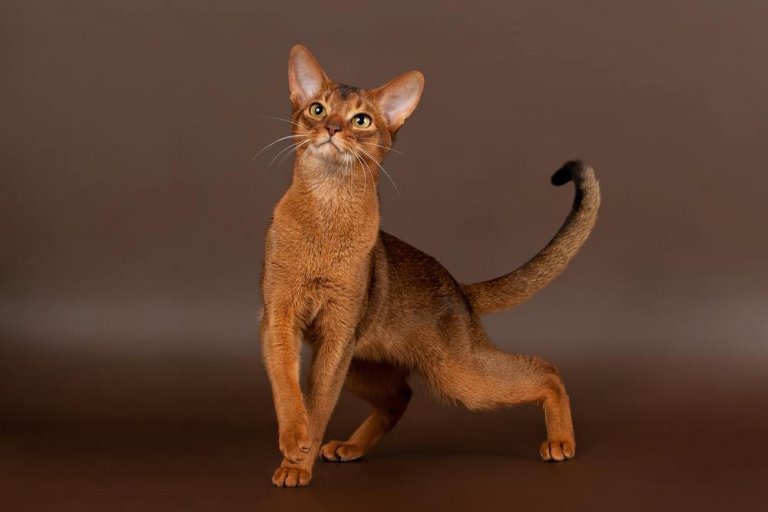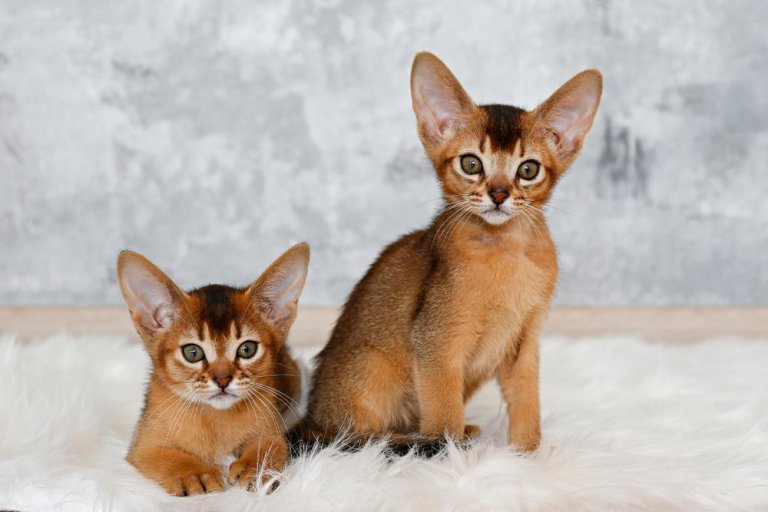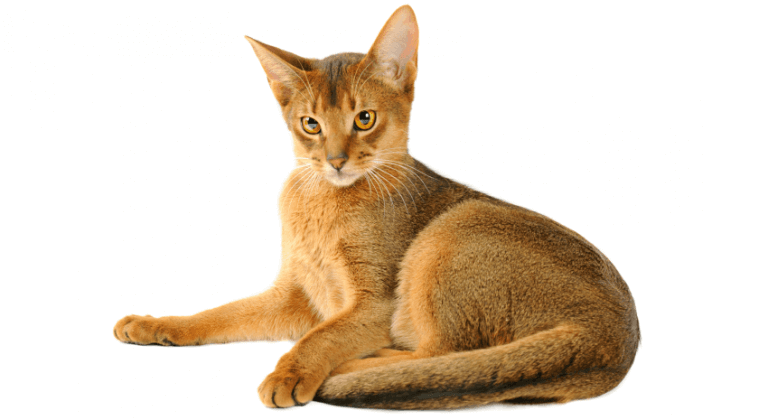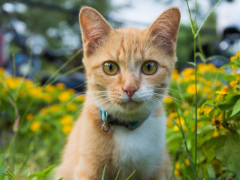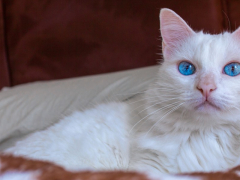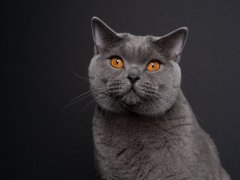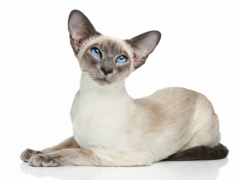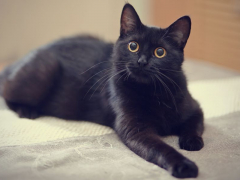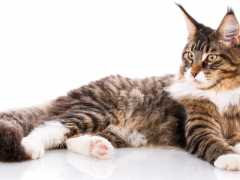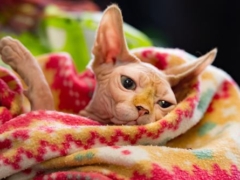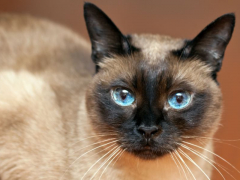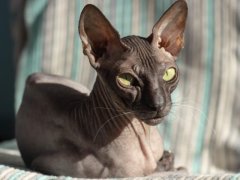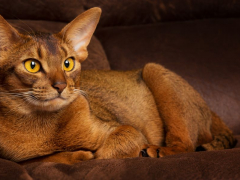Personality and Temperament
With its lean, elegant profile, the Abyssinian cat bears a close resemblance to ancient Egyptian cat statues. Unique ticked coats in a variety of exotic shades combine with large, expressive eyes, lending a sense of mystery to the breed's appearance.
Usually outgoing and active, with a fondness for being the center of attention, the Abyssinian cat develops a close bond with its family. Even so, this breed has a shy side to its personality. Abyssinian cats are often quick to disappear when strangers arrive.
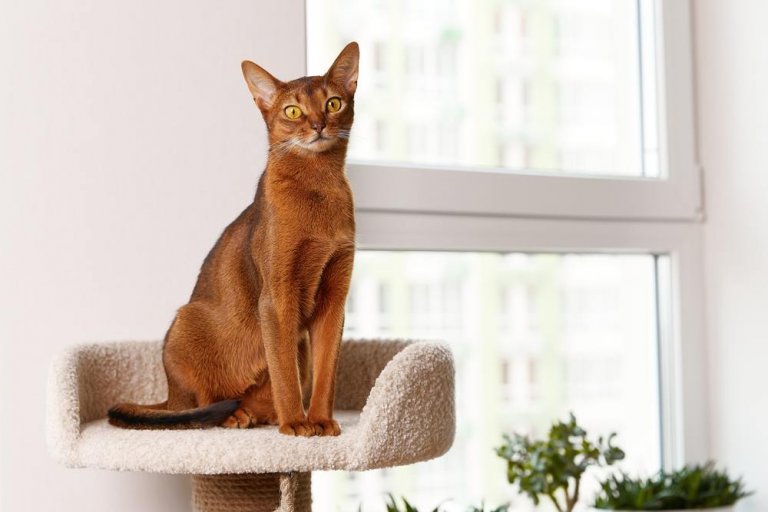
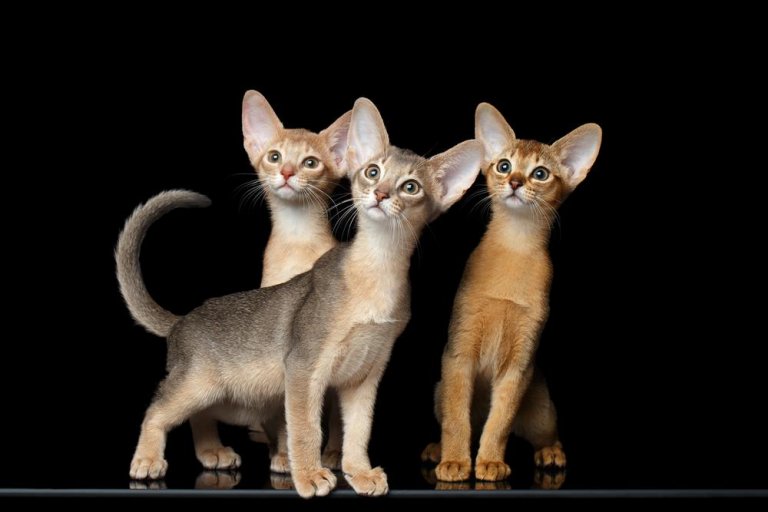
Care
Nutrition
Grooming
Exercise
Health
As with all cats, Abyssinians benefit from eating a high-quality food that provides ample protein, amino acids, vitamins, and minerals. While all cats benefit from diets with a high moisture content, Abyssinian cats need more water than average. Feeding a high-quality wet food can help cats take in extra moisture.
The Abyssinian cat has extremely short hair, so you won't have to spend a lot of time grooming your pet. Use a soft brush or grooming glove just once or twice per week to remove loose hair and keep your Aby looking and feeling their best.
Most Abyssinian cats are not fond of being held or restrained, so teach them to accept nail trimming from an early age using gentle, positive methods. Ask your veterinarian for some tips, or have your vet or groomer trim your cat's nails for you.
Abyssinian cats are extremely active by nature and luckily, they’re not prone to obesity. Give them a big cat tower to climb—preferably one that goes all the way to the ceiling—and keep the interactive cat toys coming. An Aby cat will always entertain you with their agile moves while keeping themselves fit. If you've always wanted to play fetch with a cat, it's likely that an Aby will help fulfill that desire.
Abyssinian cats tend to enjoy good physical health, but they are prone to stress and anxiety, particularly in unfamiliar situations.
In addition, Abyssinian some cats suffer from a few known health issues, including a hereditary form of anemia called pyruvate kinase deficiency (PK deficiency), a degenerative eye disease called progressive retinal atrophy (PRA), patellar luxation, and a hereditary kidney disease called renal amyloidosis.
Many Abyssinians have very long life spans. It's not uncommon for Abyssinians to live 14 to 17 years or more, with some Abys living into their 20s.
History
Abyssinians are one of the oldest cat breeds in existence. The most recent genetic research suggests the breed originated in Southeast Asia, somewhere on the coast of the Indian Ocean. This breed retains many hallmarks of the appearance of felis lybica, a wildcat that contributed its DNA to all domestic cats in existence today.
The modern Abyssinian cat is somewhat different than the original Abyssinian cat. Many of today's Abyssinian lines were created with Russian Blues, Burmese, and Siamese cats as foundation stock.
Abyssinian cats were first recognized by England's Governing Council of the Cat Fancy in 1929. America's first Abyssinian cat litter was born in 1935. The breed is recognized by the Cat Fanciers' Association and The International Cat Association.
